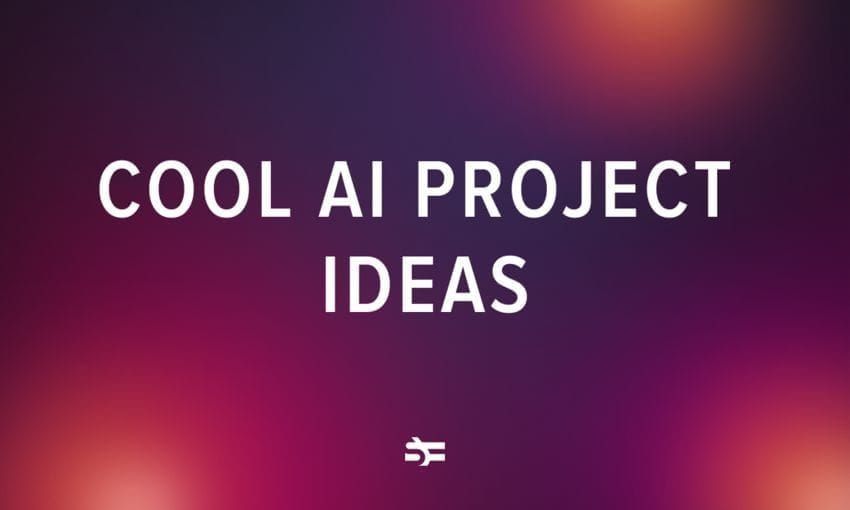Artificial intelligence is progressing fast. According to Marketsandmarkets, the AI market is expected to surpass $407 billion by 2027, compared to $86.9 billion revenue in 2022. AI is omnipresent and penetrating the areas that were previously considered exclusively human domains such art and creativity, healthcare, and justice.
While some people welcome the widespread adoption of AI and its fast progress, expecting it to resolve global issues, some people are way more skeptical about it. They believe that general artificial intelligence can menace the future of humankind. Therefore, this technology should be developed responsibly.
In this article, we will discuss the difference between these ideologies ― effective accelerators and effective altruists.
What is effective altruism?
Effective altruism (EA) is a philosophical and social movement that is focused on finding the most effective ways to do good for the maximum number of people. In the context of AI, EA advocates for the development and application of AI technologies that maximize positive societal impact while minimizing potential harms and heavily rely on the principles of AI ethics.
Some of the questions this movement is trying to resolve are:
- Who should we care about helping?
- How much better are the best options to do good?
- What can we do to prevent the next pandemic?
- How can we make better decisions together?
- How does climate change compare to other risks?
The movement started to develop at the end of 2000s, led by several evidence-based charity organizations such as GiveWell and Open Philanthropy. Moral philosophers that have been influential to the movements are Peter Singer, Toby Ord, and William MacAskill.
In the field of AI, EA tackles the issue of existential risk from the development of general artificial intelligence. They believe that AI could lead to human extinction or a global catastrophe if not developed responsibly.
This movement adheres to several principles:
- Prioritizing safety and ethics, even if it slows down AI development. EA emphasizes the importance of developing safe and ethical AI systems. This involves rigorous testing, transparency, and adherence to ethical guidelines to prevent unintended consequences.
- Focusing on long-term impact. Effective altruists are particularly concerned with the long-term implications of AI. They advocate for research into AI alignment, ensuring that advanced AI systems remain in accord with human values and interests.
- Using technology for the global benefit. EA encourages the development of AI solutions that address global challenges, such as climate change, poverty, and health crises. By focusing on the broader impact, businesses can contribute to significant positive change.
If you want to learn more about this ideology:
- Doing Good Better by William MacAskill
- The Most Good You Can Do by Peter Singer
- Superintelligence by Nick Bostrom
- Resources on EffectiveaAltruism.org
- World Optimization on LessWrong.com
What is effective accelerationism?
Effective accelerationism (E/Acc), on the other hand, is a philosophy that supports the rapid advancement of technology, including AI. EAcc advocates argue that accelerating technological development can lead to significant benefits, such as economic growth, improved quality of life, and the rapid solving of complex problems.
The movement relies on the theories of Nick Land, an English philosopher. His ideas are an eclectic mix of cybernetics studies, mysticism, speculative realism, and “dark” philosophical interests such as eugenics, anti-egalitarian and anti-democratic ideas. His writings have inspired alternative right and neo-fascist movements.
The founder of effective accelerationism is Guillaume Verdon, a former Google engineer, who sees the rapid development of AI as a way to “usher in the next evolution of consciousness, creating unthinkable next-generation lifeforms.” Other high-profile Silicon Valley figures such as Marc Andressen and Garry Tan. Verdon’s ideas have gained a certain popularity among male software developers in leading tech companies, mostly in the Silicon Valley.
E/accs are less concerned with the ethics of software development or how the uncontrolled development of software systems may harm groups of people that are already marginalized such as women and racial minorities. For example, Business Insider has recently published an article titled “The ‘Effective Accelerationism’ movement doesn’t care if humans are replaced by AI as long as they’re there to make money from it.”
This movement adhere to several principles:
- Staying optimistic. EAcc is rooted in the belief that technological progress is inherently positive and that accelerating AI development can unlock unprecedented opportunities.
- Enhancing innovation and competition. Accelerationists advocate for a competitive environment that fosters innovation. They believe that competition drives efficiency and spurs breakthroughs that can benefit society as a whole.
- Prioritizing economic growth and prosperity. Effective Accelerationism highlights the potential of AI to drive economic growth and prosperity. By rapidly advancing AI technologies, businesses can create new markets, improve productivity, and enhance overall economic well-being.
If you want to learn more about this ideology:
- Schizoid thoughts about effective accelerationism by Beff Jezos
- Accelerate: The Accelerationist Reader by Robin Mackay
- The Thirst for Annihilation by Nick Land
- The Techno-Optimist Manifesto by Marc Andreessen
Balancing opposing ideologies
The question of who is “right” between Effective Altruism (EA) and Effective Accelerationism (EAcc) in the context of AI is complex and doesn’t have a simple answer.
Effective Altruism is centered on the idea of using reason and evidence to maximize positive impact and minimize harm. This approach is particularly valuable when considering the long-term implications of AI, such as ensuring that AI systems are aligned with human values and do not pose existential risks.
In scenarios where the potential risks of AI, such as bias, loss of jobs, or even existential risks from superintelligent AI, are high, EA’s emphasis on thorough risk assessment and alignment is critical.
Effective Accelerationism, by contrast, argues for embracing rapid technological progress, with the belief that accelerated development can lead to breakthroughs that drive economic growth and solve complex problems quickly.
If the primary objective is to drive innovation, create new markets, and boost economic growth, EAcc’s focus on speed and competition may be more aligned with these goals.
In highly competitive industries or nations, rapid advancement in AI might be crucial to maintaining a competitive edge. In such cases, the EAcc approach, which emphasizes moving fast and managing risks proactively, could be more appropriate.
For businesses, it might be about finding a balance between these two philosophies. For example, a company might adopt an accelerationist approach to stay competitive while incorporating altruistic principles to ensure that their innovations do not harm society and are sustainable in the long term.
Read more:





.jpg)


